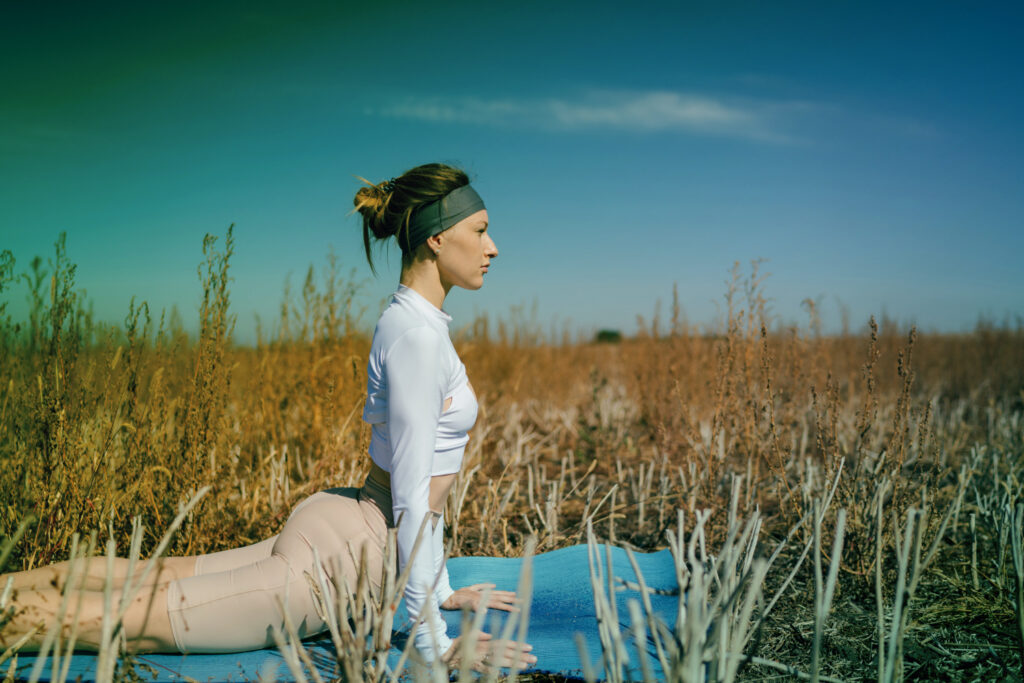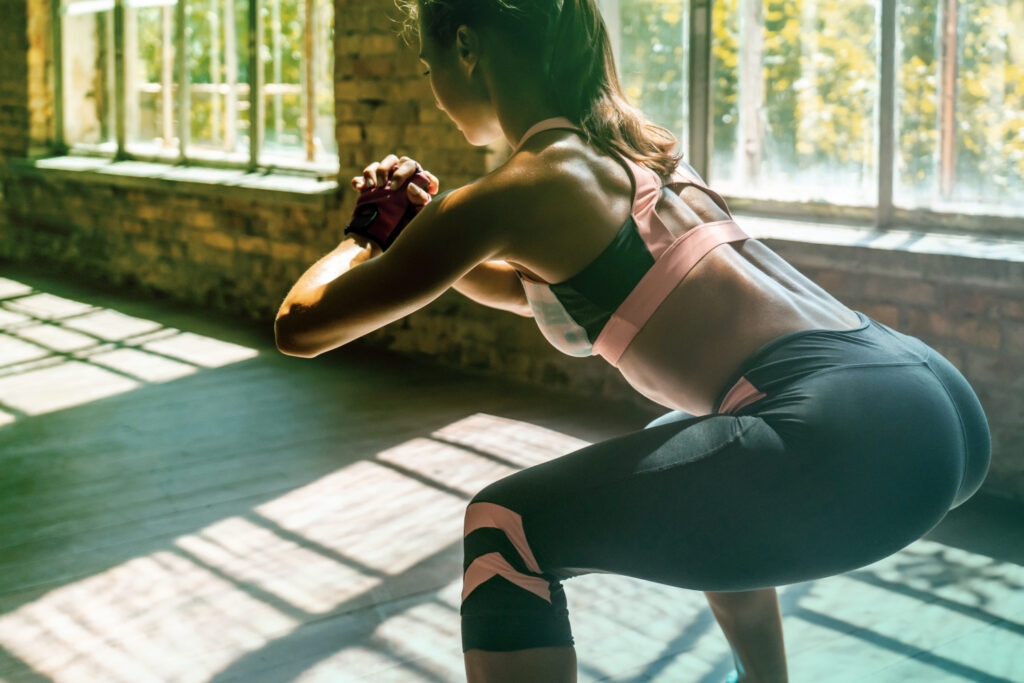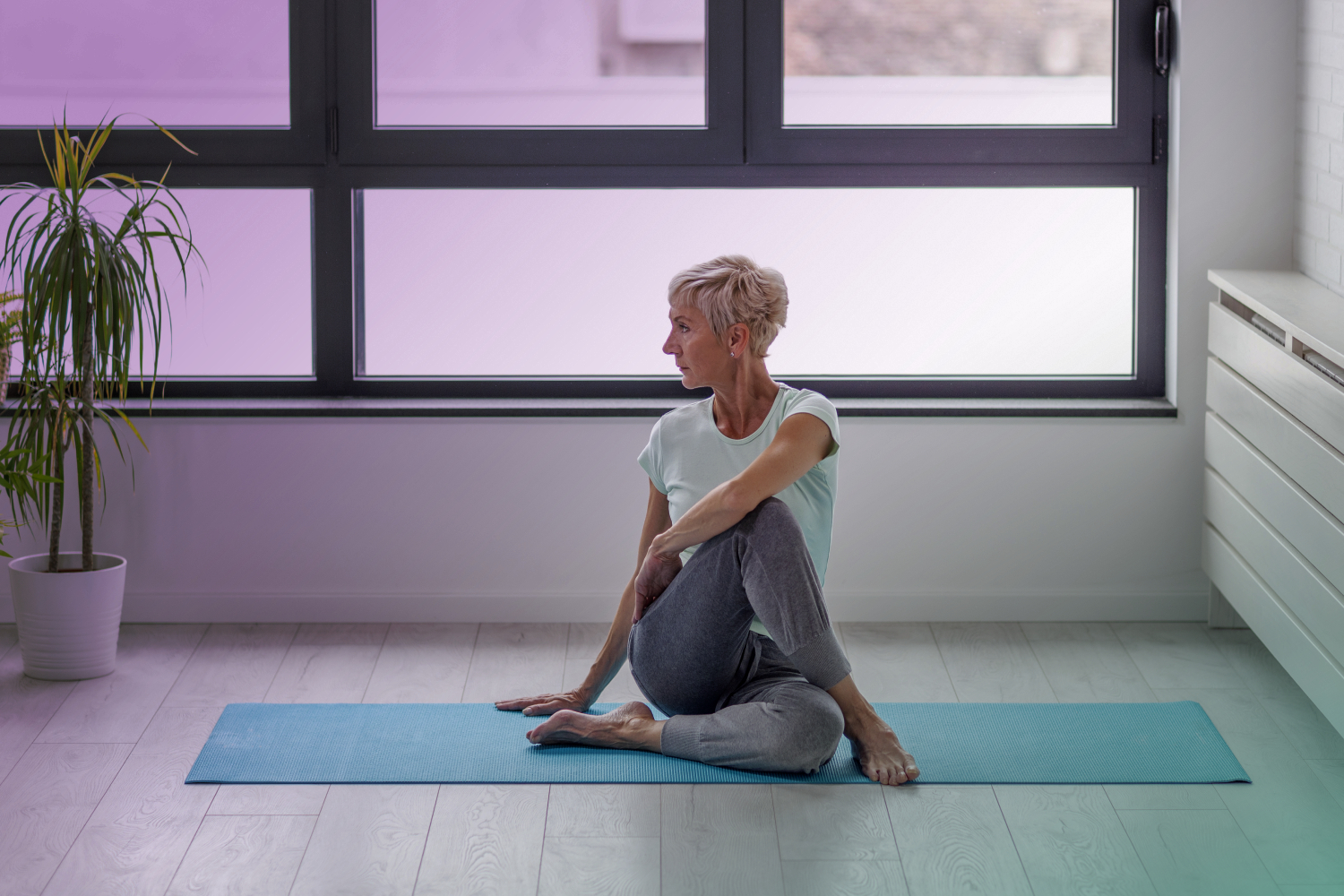No matter how hard you try to still the hands of time, you’re constantly getting older.
Initially, the signs of aging are easy to ignore. An extra gray hair now and again isn’t a big deal. You might even like the little smile lines you get around your eyes. Eventually, however, you might start to worry a little more about the impact aging has on you.
It’s tougher to look past your age when you feel it in every joint and muscle.
The good news? There might be a healthy way to counteract some of the side-effects of aging.
For many holistic health professionals, yoga and aging are a perfect duo.
Yoga Increases Anti-Aging Hormones in the Brain
Regular stretching and balance activities strengthen your muscles, improve your endurance, and reduce your risk of dangerous accidents. Plus, there are even some kinds of anti-aging yoga that can help you to feel more spritely too.
Let’s take a closer look.

Restorative yoga benefits: Why is yoga great for aging?
First, the bad news. As you age your body will change.
You become less stable, flexible, and durable. Your muscles lose their elasticity, and even your bones get weaker. That’s why your doctor will start to recommend anti-aging yoga and regular exercise to get you back on track.
Regular movement prevents your muscles from seizing up and gives you back some of the flexibility that you begin to lose. Discovering some common restorative yoga benefits as early as possible will help you to delay the effects of aging for longer.
Let’s look at the science.
Studies published by the Journal of Occupational and Environmental Medicine show that yoga increases coordination and balance, which reduces your risk of falling.
The study also discovered that bone density increases after regular yoga sessions – particularly around the hips, spine, and femur.
The researchers concluded that anti-aging yoga is a low-cost and safe alternative to medications that prevent osteoporosis. What’s more, yoga comes with some pretty impressive side-effects, including better mood, improved balance, increased coordination, and reduced anxiety.
Yoga and aging: The impact on your brain and cells
The impact that yoga has on your body is pretty impressive.
However, therapeutic yoga benefits go beyond stronger muscles and bones. You can also end up with a tougher brain too. One study on the impact of yoga on memory and neural connectivity demonstrates the impact of a weekly yoga routine on the brain.
According to the report, regular exercises bolster brain activity and reduce the risk of cognitive decline. Over a period of 12 weeks, the researchers examined patients and their memory with and without yoga sessions.
The scientists determined that yoga is just as effectiveas memory enhancement training when done regularly.
Another study published in the Oxidative Medicine Journal explored the benefits of yoga when related to oxidative stress.
The research suggests that yoga has a positive impact on stress and inflammation. Biomarkers like cortisol (the stress hormone) have a serious impact on our health.
Anti-aging yoga helps to reduce the levels of cortisol in your blood stream, so you’re less vulnerable to things like stroke, heart disease, and type 2 diabetes. Another biomarker known as BDNF, also responds well to yoga.
This substance affects how well the brain can produce new neural connections. People with chronic stress often have lower levels of BDNF. These individuals also have a higher risk of disorders like Alzheimer’s.
However, a study for the Frontiers in Human Science found that a three-month yoga and meditation retreat helped participants to regain BDNF levels.
Yoga for healthy aging poses to keep you one
So, how exactly do you turn back the clock with anti-aging yoga.
There are no magical poses that will instantly smooth out your wrinkles or eliminate joint pain overnight. Virtually any kind of yoga can cleanse, relax, and restore your body.
If you’re new to yoga, however, it’s best to start simple. Tackling tricky poses that require a lot of flexibility might lead to more harm than good. The following simple poses offer a great starting point:
1. Equal standing
Improving your posture is crucial as you get older. It reduces your risk of pain caused by slouching and helps with building balance. To perform the equal standing pose, stand on a yoga mat with your bare feet parallel together.
Lean forward, backward, and side to side, focusing on how your body feels, and how balanced you are in different poses. Imagine that something above you is pulling you up towards the ceiling, keeping your spine straight, and your body in perfect harmony.
2. Tree pose
Balance is something that many people struggle with as they age. The tree pose is a good way to help you maintain that balance. Start in the same pose you used for equal standing, then shift your weight onto your left leg. Bring your hands forward and clasp them in front of your chest.
Push into the toes of your right foot, opening the right hip and leg. If you start to feel unsteady, keep your right toes on floor. If you’re comfortable, bring your right foot off the floor and rest it against your calf or thigh. Hold your posture, then switch to the other leg.
3. The downward dog
Probably the most famous yoga pose, downward dog, improves strength and spine posture. Get onto your hands and knees, with your knees properly aligned with your hips. Bring your hips up so that your tailbone is stretching towards the ceiling.
Push onto your tiptoes and keep your heels off the floor, with your hands spread out in front of you to give you balance. You’ll need a gentle bend in your knees at first. However, you can gradually stretch your legs out fully to get the most out if those pose.
Avoid pushing all of your weight into your shoulders. Make sure that you have plenty of strength in your hands and wrist.
4. Seated twist
Twists promote a healthy spine and can also help to eliminate back and hip pain. To start, sit in a comfortable pose with your legs crossed. Keep your spine straight and sit up as much as you can as you inhale.
As you exhale, twist slowly and carefully to the right, moving from the base of your spine.
Place your hand on the opposite knee as you twist, and the other hand behind you. This will give you better balance. On each inhale, lengthen your spine, and be prepared to turn to the other side at the end of each movement.

5. Squat
Finally, squats are brilliant for protecting your knees and reducing joint discomfort. Start in the equal standing position we mentioned above. Keep your feet and knees together, and squat down, as though you were going to sit in a chair.
Only go as far back as you can while feeling balanced and comfortable. Make sure that your knees stay behind your toes to avoid any problems with posture. Reaching your arms ahead of you will support your balance.
Discover the benefits anti-aging yoga
Yoga delivers a healthier, more limber, and flexible body. Around half of the age-related changes that happen to our muscles and bodies as we get older are a result of disuse. Yoga gives us a low-impact way to fight back against muscle and bone problems.
What’s more, yoga also has the potential to help with various kinds of pain and other issues that might emerge as you get older. Regular yoga practice improves joint flexibility, reduces your risk of arthritis, and helps with developing a stronger core.
Other issues that anti-aging yoga can address include:
- Improving circulation: Stretching your muscles and moving your body helps to eliminate problems caused by circulatory system issues. Yoga allows you to explore your body in slow, safe movements and discover which parts need more attention.
- Reducing stiffness: As we age, we lose the flexibility in our muscles and connective tissue, leading to imbalance. Yoga lubricates your muscle and joints, so your body remains fluid and flexible. You don’t even have to touch your toes to feel the benefits.
- Hormonal changes: If you’re interested in yoga benefits for women of a certain age – yoga can help with hot flushes and menopause too. Studies demonstrate that restorative yoga benefits can include a decrease in uncomfortable menopausal symptoms.
With the potential to help with everything from high blood pressure to stress levels, yoga really is one of the best things you can do for your body as you get older. It’s safer than most of the other high-impact exercise options out there.
Plus, yoga can be a brilliant way to manage your emotions, as well as your body.
Why not give it a try?
ReWired: ReThink Your Life.




